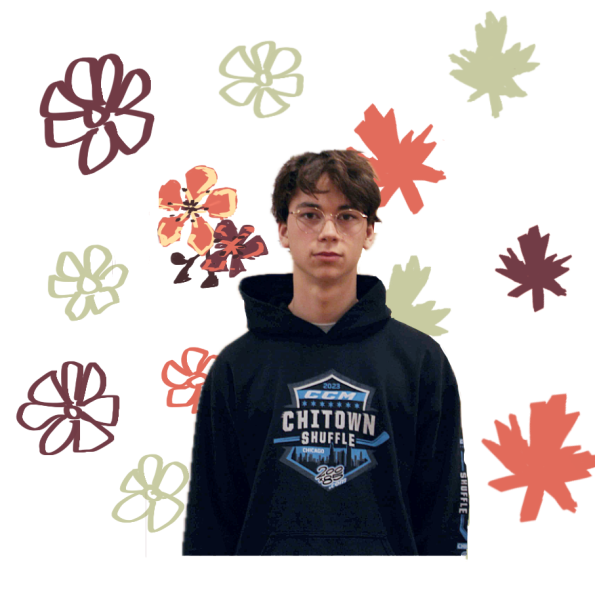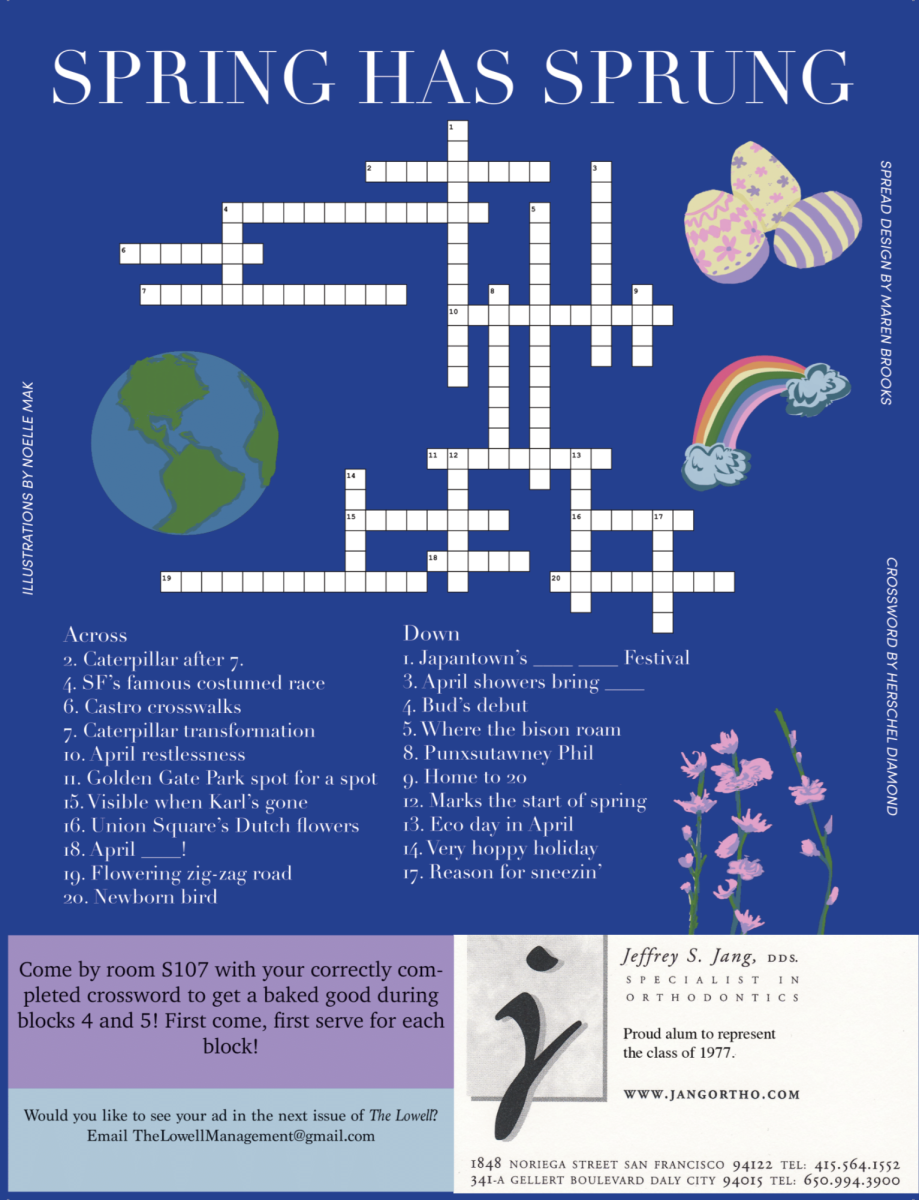As junior Sydney Sharp walks through the door of her family’s home, she feels her relatives’ eyes scanning her features, taking stock of her appearance and forming opinions. Her face turns red as she crosses the room, preparing for the judgmental comments that she is about to receive. Her family members criticize her mixed-race traits as they contrast her appearance with that of her Chinese mother, leading to Sharp feeling separated and rejected from the rest of her family. The judgment she undergoes from her own family devastates Sharp, as she feels less comfortable and in touch with her mixed identity than ever.
Sharp is one of many mixed-race students who struggle to find connection and belonging within their different cultures.
Many mixed-race students struggle to conform with one or multiple aspects of their identity, feeling pressured to align themselves with one side of their heritage or feeling disconnected from their relatives and other members of their cultural groups. For many mixed-race people, finding belonging among other people with differing identities from themselves can be difficult. While this can foster feelings of isolation and uncertainty, many mixed-race students feel that being mixed-race also provides opportunities for exploring their identity and heritage.
According to Niche, a site that provides school demographics, almost 10 percent of Lowell’s student population identifies as mixed-race. Some mixed-race individuals feel pressured to increase their connection to their varied heritage in order to establish a sense of belonging. “Mixed-race people, most of the time, don’t have mixed-race parents, so that increases the isolation,” Rebecca Godard, a PhD candidate in psychology at the University of British Columbia, said. “As humans, we’re really wired to find a community of people who are like us.”

Many students at Lowell struggle to find their own community, experiencing rejection or exclusion from their families or communities due to their mixed identities. According to junior Julian Walsh, who identifies as one-quarter Japanese and three-quarters white, his family has expressed a desire for him to become more invested in his Japanese side. “I know that my grandma would say that it is very important for me to connect with my culture,” he said. Despite Walsh’s satisfaction with his own identity and expression, his family’s wish for him to speak Japanese and have a deeper understanding of Japanese culture has caused him to feel conflicted about the level of connection he has to his heritage. According to the Washington Professional Educator Standards Board, language and culture are inextricably linked. Types of language usage vary by culture, and the language spoken by a community plays a significant role in that group’s way of connecting and bonding. Junior Ryan Braunstein, who identifies as Chinese and white, feels a sense of disconnection from the Chinese part of his family due to a language barrier. “[I cannot] speak Toisan to my grandma like my mom’s side of the family can, and I feel like they understand the culture so much more than I do,” he said.
For other students, their feelings of cultural disconnect are rooted in their physical appearance. Sophomore Sasha McKenney, who identifies as half Japanese and half Black, has struggled to feel comfortable in her appearance as a mixed-race person, feeling separated from the rest of her family. “In elementary school, a girl told me that I was too dark to be Asian and too light to be Black,” she said. “Looking at all the photos taken with both sides of my family, I always end up standing out, [and] that doesn’t bring out the most positive emotions.” Difficulties fitting in with the rest of their family can contribute to students’ struggles to find belonging within their community. Similarly, mixed-race students like Sharp and Walsh, who consider themselves to be white-passing, can experience further disconnect from their heritage as their mixed-race identity isn’t always visible to others. According to the Rochester Institute of Technology, the term “white-passing” is used to describe a person of color who is commonly perceived as white by the rest of society based on their appearance, environment, and individuals’ assumptions. As someone of mixed white and Chinese descent, Sharp often feels anxious about attending family gatherings. Her relatives compare the way she looks to other people in her family, criticizing her mixed-race traits and claiming that she does not appear Chinese. Her family’s attitude towards her mixed-race identity creates a sense of exclusion, causing Sharp to feel isolated from her family and distanced from her culture. According to Sharp, people even occasionally struggle to recognize that she is related to her family members when she is in public with them. “When I go to the doctor’s office, I’ll walk up there with my mom, and since I’m very white-passing, they’ll say, who’s your mom? It’s the woman next to me,” she said. “It makes me a little sad, [because] I feel like half of my identity is just erased.” This assumption, along with others from relatives and friends, have seriously affected Sharp’s self-confidence and caused her to have difficulty discussing her identity.
Senior Simone Andrade, who identifies as one quarter Black and three quarters white, said that the contrast between her racial identity and her physical appearance has caused her to question if she should publicly identify as a mixed-race person. “When I was younger, I didn’t feel comfortable calling myself mixed,” Andrade said. “I look very white, and I’ll always be treated with the privilege of a white person, so it didn’t feel legit.” Similarly, Walsh feels that others’ perceptions of his race have influenced his identity, minimizing his own identification with his Japanese heritage. “I don’t really feel like it’s a big part of me, at least in other people’s eyes,” he said. “[However], I feel like there is guilt that I should be more connected to that community.”
According to Godard, students with more than two ethnicities making up their background can experience further disconnect from their various cultures. She said that if mixed-race people have just a small number of distant relatives that identify with part of their culture, it may be harder for the person to feel connected to all parts of their heritage. “Maybe that ancestry is further back in your family, maybe you only have one grandparent,” Godard said. “You might lose that connection more easily than if you have two [grandparents] and a parent.” Sophomore Amaya Tawasha Diwan, who identifies as half Punjabi Indian, one quarter Palestinian, and one quarter Colombian, said she previously felt a stronger connection to her Indian heritage than to her other races, as it constitutes a larger part of her ethnic makeup. “I used to be pretty disconnected from my Palestinian and Colombian sides,” she said. “People sometimes told me that because I was a quarter of this or a quarter of that, it didn’t count.” Similarly, junior Eva Kirschner, who identifies as white, Japanese, and Hawaiian, has faced a similar struggle to feel validated in her identity. “It’s easy to feel like a fraud,” Kirschner said. Through engaging with other mixed-race students and building community among them, Kirschner has learned to accept that she may never feel fully connected and validated in all of her cultures. “It’s a common experience for mixed kids to not feel like they fully fit in anywhere,” she said.

Despite the struggles that some mixed-race students face, Diwan feels that belonging to multiple cultures provides her with an opportunity to explore her identity, embrace her heritage, and find welcoming and supportive environments. “It’s really empowering to know that I have so many communities who accept me,” she said. “I’m definitely very proud of all of my cultures.” McKenney feels that although it can be isolating at times, being mixed-race provides opportunities for greater connection with various groups. “Instead of thinking of yourself as this unique outsider [from] everyone else, you can think of it more like you’re able to fit into multiple different places,” she said. “You don’t have to be in just one box, you can expand outside of it and be your own unique individual.” Andrade believes that discussing her racial identity with her family has enabled her to accept herself and her mixed heritage. “As I’ve gotten older and talked to my family, I’ve learned to have more pride in that [Black] side of my family,” Andrade said. “I’ve learned that by saying I’m mixed, it isn’t only validating myself, but it’s validating my whole family and recognizing my culture.”
As mixed-race students explore their cultures and develop their own identities, many choose to merge aspects of their heritage together. McKenney has found joy in educating others about the various parts of her identity and the intersections between them. “I think the moments when we can share the different aspects of our cultures is really beautiful, and is really what it means to be a mixed person,” she said. Braunstein believes that his perspective as a mixed-race person encourages him to explore and appreciate communities different from his own. “It lets me see the world in a different view, and it allows me to be more open minded about diversity in general,” he said. Walsh emphasizes the importance of unifying his identity across his different cultures. “If you’re mixed-race, you’re not one thing or the other,” he said. “Embracing yourself as a whole is the only thing you can do.”

Overall, Godard believes that it is beneficial for mixed-race people to pursue a journey of self-identification in order for them to better understand themselves. “As long as they go through that identity exploration process, they can end up in a healthy place,” she said. “You can’t put yourself in a box, everyone’s journey is different.” Kirschner feels that mixed-race students should not feel pressured to portray themselves as a perfect mix of their various identities. Rather, she believes that individuals should attempt to explore their heritage and cultivate an identity that feels authentic to them. “Culture is not monolithic,” Kirschner said. “Having such an array of cultures, you can pick and choose which ones resonate with you.” To add on, Sharp wishes to dispel the belief that the racial identities of mixed-race people are fragmented or less than whole. “I don’t think of mixed people as being 50 percent white or 50 percent Asian,” she said. “I think of them as 100 percent white and 100 percent Asian.”
Many students expressed that the process of finding one’s identity can be long and difficult, and believe that it is normal for people to be at different stages of their journey. Walsh feels that he has been able to make steps towards self-acceptance by disregarding others’ expectations in favor of pursuing his own form of expression. “There’s no certain way you have to be,” he said. “You can decide what you want to practice culturally, what you want to believe in, [create] your own set of values, and accept yourself as this unique person.”
















